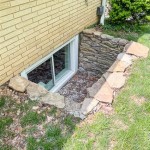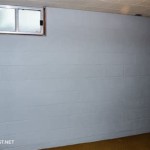How to Fix a Basement Leak: A Comprehensive Guide
Discovering a basement leak can be disheartening, but it's a common problem with many potential solutions. By understanding the causes and implementing the appropriate repair methods, you can restore your basement to a dry and habitable space.
1. Identifying the Source of the Leak
The first step is to locate the exact source of the leak. This can be challenging, as water can travel through walls and floors. Here are some common sources to check:
- Cracks in basement walls or floors
- Loose or damaged pipes
- Foundation leaks
- Window wells or doorframes
- Sump pump problems
2. Sealing Cracks and Holes
Once the leak source is identified, sealing any cracks or holes is typically the first step. Use hydraulic cement for cracks in concrete walls or floors. For hairline cracks, epoxy injection can be effective. Caulking or expanding foam can seal smaller holes around pipes or other openings.
3. Repairing Pipe Leaks
Leaking pipes can be a major source of basement moisture. If the leak is at a connection, tighten the nuts or bolts and apply pipe sealant. If the pipe is damaged, it may need to be replaced. For stubborn leaks, consider calling a professional plumber.
4. Addressing Foundation Leaks
Foundation leaks occur when water seeps through the concrete or masonry walls of your basement. These leaks can be challenging to repair, and it's often recommended to consult with a structural engineer or waterproofing specialist.
5. Fixing Window Wells and Doorframes
Window wells and doorframes can allow water to enter the basement if they are not properly sealed. Caulk around the edges of window wells and install a splash guard to deflect water away from the window. Seal any gaps around doorframes with weatherstripping.
6. Maintaining Sump Pumps
Sump pumps are essential for removing water from basements. Regularly inspect the pump for clogs and ensure it is operating correctly. If the pump fails, water can quickly accumulate and cause significant damage.
7. Improving Drainage
Improving drainage around your home can help reduce the amount of water that seeps into your basement. Install gutters and downspouts to divert rainwater away from the foundation. Consider sloping the soil around your house to promote drainage.
8. Waterproofing the Basement
For severe leaks or to prevent future problems, consider waterproofing your basement. This involves applying a waterproof membrane or coating to the walls and floors. Waterproofing can be a significant investment, but it can provide long-term peace of mind.
Conclusion
Fixing a basement leak can seem daunting, but by methodically addressing the source of the leak and implementing the appropriate repair methods, you can restore your basement to a dry and comfortable space. Remember, if you encounter any challenges or the leak is significant, don't hesitate to consult with a professional contractor or waterproofing specialist.

The Best Methods For Basement Leak Repair Acculevel

12 Tips For Fixing A Leaky Basement Family Handyman

Can You Fix A Basement Leak By Yourself Gj Macrae Foundation Repair

5 Maintenance Tips To Prevent Basement Leaks Renco Home Improvements Foundation Repair

How To Fix A Leaking Basement The Complete Guide Uss Tn

Repairing Leaking Basement Walls What Works And Doesn T Work For Wall Leak Repairs

How To Fix And Prevent A Leaking Basement Projex

How To Fix Basement Wall Cracks American Dry

Get To Know How A Leaky Basement Can Ruin Your Home

Help My Basement Leaks When It Rains News And Events For Systems Inc
Related Posts







